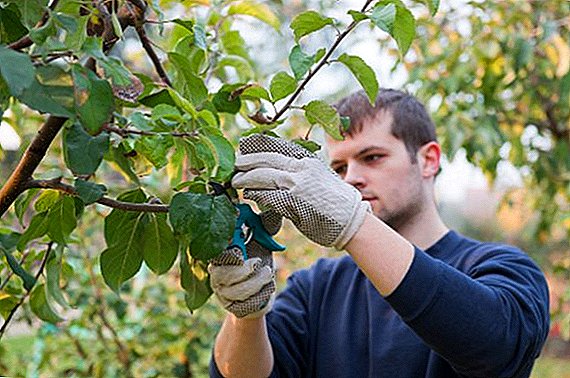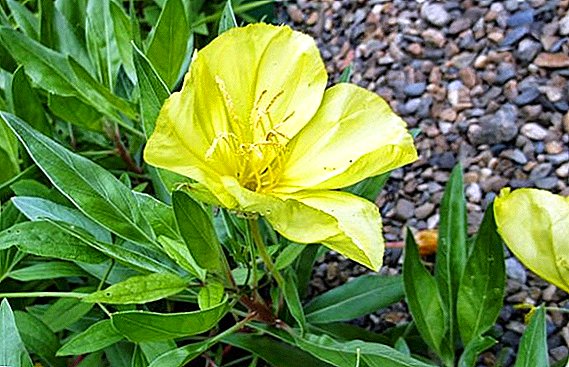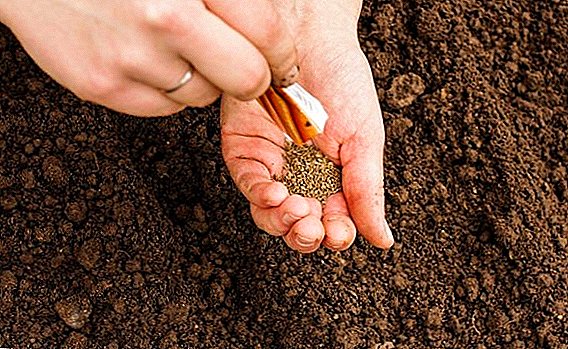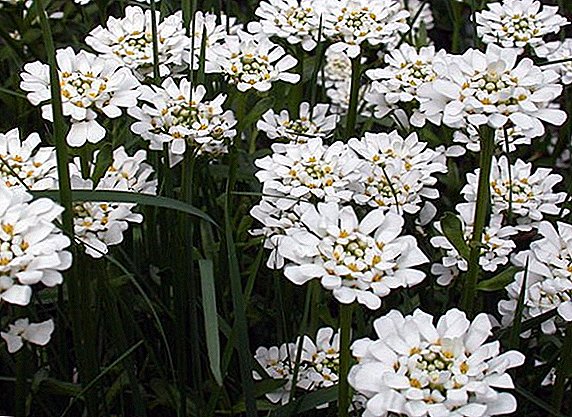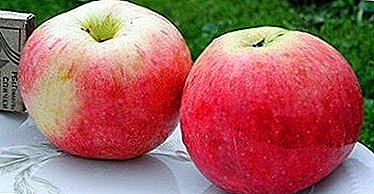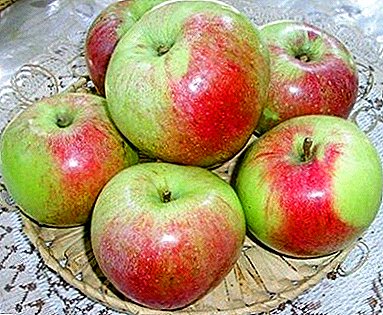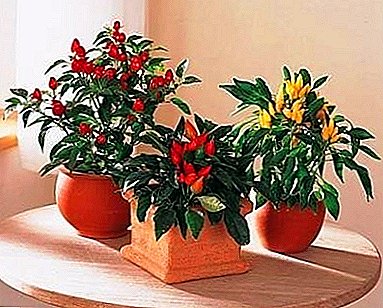
Pepper family has about 1500 species.
They all differ in shape, size, color and taste. Of the hot peppers, the most popular is pepper.
This hot pepper comes from Mexico, and came to European countries thanks to Columbus.
Pepper light - a perennial plant. It can be grown on the garden, and you can on the windowsill.
Its small red peppercorn will become an exquisite decoration of the kitchen window sill. Also, the fruit can be used in cooking.
general description
The most common pepper "Spark" received in Eastern Europe. It can be used in the preparation of the first and second courses. It will give the dish spiciness and piquancy.
 What is this pepper? "Spark" is a small ornamental shrub.
What is this pepper? "Spark" is a small ornamental shrub.
It grows to a height of about 40 cm. But even despite its small size, there can be up to 50 peppercorns on one plant at a time.
For the year about 100 peppers can be collected from the shrub. Their size varies 2.5-5 cm in length and 0.8-1.2 cm at the base. Fruit weight can be from 20 to 50 g.
In the process of ripening peppercorns change their color. At first they are green, then yellow, and during ripening they become bright red.
They may differ in shape - they are round, oval, with pointed tips or in the form of elongated pyramids.
Pepper "Spark", growing on the windowsill, begins to bloom in spring, and at the end of summer the first fruits ripen on it.
The periods of flowering and fruiting often coincide. Therefore, a miracle may appear on the window, at which white flowers and bright red peppercorns can be observed at the same time.
Interesting! Indoor type of pepper “Spark” appeared by crossing two types - cayenne and chili (more information about cayenne pepper can be found here, and more details about the types of Chile can be found in this material).
He belongs to the perennial plants, and with proper care will please the owners for at least 5-6 years. In the summer months, plant pots can be put on the balcony.
Pepper seeds
 At the end of the summer or the beginning of the autumn the fruits ripen.
At the end of the summer or the beginning of the autumn the fruits ripen.
This can be recognized by the bright red color of the pod.
Seeds are extracted from such ripe fruits. They must be expanded and allowed to dry. After which the seeds will be stored for a long time. In the spring they are used for planting.
Seeds, like pulp, have a sharp taste.
They can also be added to the dish during cooking or used for preservation. The seeds will give the dish a savory taste and aroma.
A photo
The photo shows the Pepper "Spark":


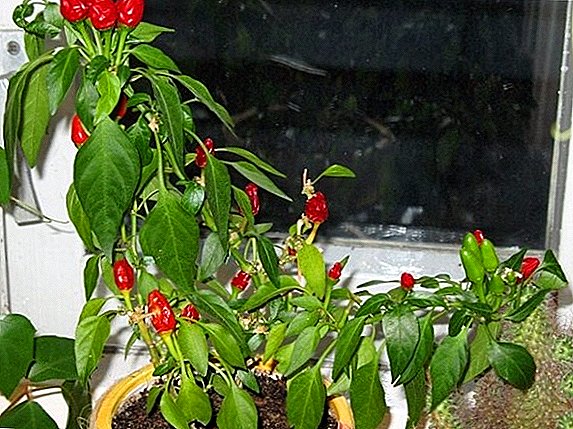


Home care
How to care for pepper at home? "Spark" - a perennial shrub, giving a large number of edible fruits and does not require special care. It is precisely because of its qualities that it is often grown on the windowsill.
Care after purchase
 After buying the plant you need to provide a comfortable environment.
After buying the plant you need to provide a comfortable environment.
First of all, you need to see whether the shrub needs a transplant.
If the pot is small, then after a period of adaptation, the shrub is transplanted into a new container.
For the adaptation period, which lasts 7-10 days, the plant is placed in a room with a temperature of 17-20 degrees and good lighting. The soil in the pot should be slightly moist.
Lighting
Pepper - light-shrub. Light day should be 10-12 hours. During the winter months additional lighting is required. With a lack of light leaves fade and fall off, flowering stops. The plant can discard already formed peppercorns. In summer, a pot of pepper can be taken out on the balcony.
Watering
The light needs moderate watering. The soil in the pot should always be hydrated. It is necessary to avoid excessive watering, as this can lead to rotting of the roots and the destruction of the shrub.
Important! At low humidity it is worth spraying the green part.
Water for this you need to take room temperature, separated by at least a day.
Crown formation
The plant does not need pruning. To give a decorative look and for the best growth of the side branches, you can pinch the tops of the shoots. In this case, the bush will become more lush. In order for peppercorns to be larger, it is necessary to remove some of the florets.
Planting and transplanting
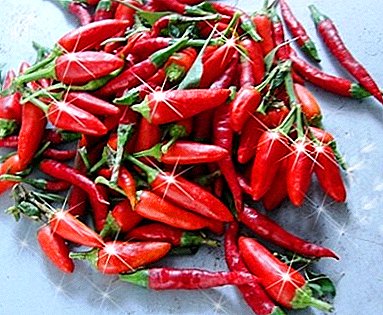 How to plant a seed house?
How to plant a seed house?
Seed propagation is considered the most effective method.
They are sown at the beginning of spring in the seedling boxes.
Planting depth should be no more than 1 cm. After planting, the surface of the soil is moistened with a spray gun.
The seedling box is placed in a room with a temperature of 22-24 degrees. In 10-14 days, shoots will appear. After that, the room temperature should be lowered to 20 degrees. After the appearance of 2 leaves, seedlings are transplanted into pots.
Pepper is transplanted in the spring every 2 years. For transplanting takes a pot with a large diameter.
Breeding
For reproduction can also be used not lignified shoots. Cut the shoots should be left in a container with water until the roots. After which they are planted in separate pots.
Growing up
How to grow at home? In order for the pepper “Spark” to develop properly, it is necessary to observe the temperature and light conditions. Also perform regular watering and fertilizing.
Priming
For planting you need to prepare the land mixture. In the ratio of 2: 1: 1 is mixed:
- leafy ground;
- humus;
- sand.
The bottom of the pot is covered with a layer of drainage.
Fertilizer
Mineral fertilizers for tomatoes are used for top dressing. You need to fertilize wet soil and strictly according to the instructions. It is not necessary to feed in winter.
Benefit and harm
Important! Pepper Spark contains vitamins A, B, E, C and PP, as well as capsaicin, carotene, oils and carbohydrates.
 Dry fruits can be ground to a powder and add to a hair mask.
Dry fruits can be ground to a powder and add to a hair mask.
Capsaicin improves blood circulation in the skin, which promotes hair growth.
When eating pepper, the body produces the hormone endorphin. It helps reduce pain, relieves stress, improves blood circulation.
Juice helps to reduce pressure, improve metabolism. Tincture is used as a warming agent. Used for cold and radiculitis.
Pepper "Spark" is contraindicated for people suffering from heart and gastrointestinal diseases.
- Habanero;
- "Bell";
- "Jalapeno".
Diseases and pests
Important! With excessive watering can rot the roots, and with a lack of moisture - drying leaves.
Of the pests the most dangerous aphid and spider mite. It is possible to get rid of them with the help of insecticides.
Pepper "Spark" with proper care will bear fruit for several years. It will become not only a bright decoration of kitchen windows, but also serve as a piquant addition to the table.


